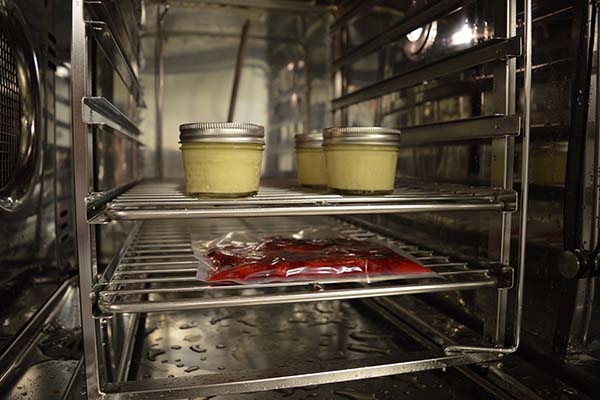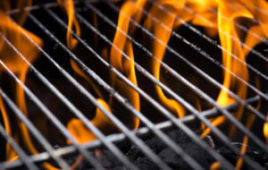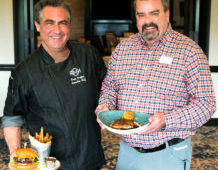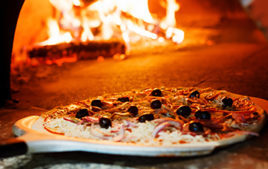When fully understood and wielded properly, combis can be a club kitchen’s most versatile tool.
Talk to any club chef who’s familiar with combi-oven technology and chances are you’ll find that they don’t just like it—they love it. But for the uninitiated, these workhorse ovens can be both intimidating and somewhat baffling in their uses, capabilities and qualities.
“Combi ovens provide huge benefits to a club in their sheer versatility,” says the Corporate Executive Chef of one manufacturer. “You can grill, sear, poach, steam, steam-bake, bake, air-fry, proof breads, dehydrate, crisp, sous vide—and so much more. They cook food faster, preserve yield, and make food taste better than traditional convection ovens or steamers, too.”
In short, combis are the Swiss Army knives of ovens—and when they are fully understood and wielded properly, they have the potential to be the kitchen’s most versatile tool.
What Is A Combi Oven?
Combi ovens are so named because they offer three methods of cooking in one unit: pressure-less steam, convected heat, or a combination of both.
In the convection mode, the oven circulates dry heat, which is ideal for baking, frying or roasting. In the steam mode, the oven injects water, to help with steaming and poaching. The true genius behind the combi is its combination mode, which uses both dry heat and steam to maintain exact humidity levels.
“Adding humidity to the cooking chamber preserves food quality, integrity and yield,” says the manufacturer’s chef. “Controlling both heat and humidity gives you greater flexibility and more cooking options in the same appliance.”
What Can a Combi do for a Club?
The manufacturer’s Corporate Chef gets asked this question frequently; in response, he provides five main points to demonstrate just how useful a combi can be—especially in a club kitchen.
Higher-Quality Products. When you compare a stalk of asparagus that has been steamed on the stovetop in salted water to one that has been steamed in a combi, the differences are surprising. In water, the asparagus loses much of its flavor and nutritional integrity; instead, it absorbs salt. In the combi, however, there is no loss of flavor or nutritional content, because the asparagus isn’t sitting in water. In the end, the asparagus is more flavorful and the color is actually brighter. The same goes for proteins, custards and breads; the quality is generally superior.
Higher Yields That Lead to Lower Food Costs. When you steam shrimp at 148°F, for example, the muscles don’t tighten and contract. You end up with less shrinkage and the perceived value of a larger shrimp. Similarly, roasting a pork shoulder typically causes a 40 to 50% loss in fat; but in a combi, only about 14% is lost. These higher yields are also achieved in a shorter amount of time, with less labor.
Safety and Sanitation. Because the combi oven injects water into the chamber, there is never a need to fill and transport heavy pans of water for items like custards; when the humidity is set correctly, they will come out perfectly uniform. Combis also keep a detailed record—down to the second—that can be downloaded and printed for HACCP compliance. They are also self-cleaning.
Ease of Use Means Better Consistency. Because chefs can program recipes into the oven, dishes are more consistent across the operation, regardless of who is (or is not) on the clock.
Versatility. Being able to do everything from roasting to high-volume sous vide in a combi is a game-changer for many club operations—especially for banquets.
What kind of maintenance is involved?
Staying on top of kitchen equipment maintenance saves money in the long run—and combi ovens are no different. Most have self-cleaning features that use tablets or liquid detergents, so be sure to check the user manual for manufacturer recommendations on which cleaners to use, and how often to use them.
How much?
The price tag for combi ovens might be higher than a single-function piece of equipment; units can range from $8,000 to $20,000 or more, depending on the size and model. But the savings are recouped elsewhere, says the manufacturer’s Corporate Chef.
“Not only can clubs eliminate the cost of buying several different pieces, the combi cuts food waste, labor and utility costs,” he says. “The footprint is also smaller, which can be a big advantage for clubs with small kitchens.”




